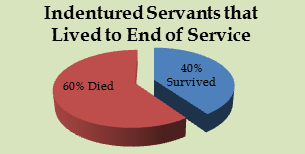
Reading resources
© Reading-SocialStudiesSolutions
Text Credits:
http://education-portal.com/academy/lesson/13-colonies-colonial-life-economics-politics.html;
Northern Colonies- Mayflower Compact, governments- http://www.ushistory.org/us/3b.as; The Writer’s Guide to Everyday Life in Colonial America by Dale Taylor, p. 40, Rhode Island p. 49;
Middle Colonies- New Jersey government- The Writer’s Guide to Everyday Life in Colonial America by Dale Taylor, p. 55; Pennsylvania colony (Freedoms);
The Extraordinary Suzy Wright: A Colonial Woman on the Frontier by Teri Kanefield, p. 9;
http://www.socialstudiesforkids.com/subjects/colonialtimes.htm;
Farmers- The Farmer by Wil Mara;
My Dearest Friend: Letters of Abigail and John Adams by Margaret A. Hogan and C. James Taylor; Abigail struggles with illness - her, her family, and the communities. (September 1775, pp. 74 and 75.)
Women- The Extraordinary Suzy Wright: A Colonial Woman on the Frontier by Teri Kanefield, p. 14 (rights);
http://www.history.org/almanack/life/trades/traderural.cfm;
http://www.history.org/almanack/life/trades/traderural2.cfm;
http://www.ushistory.org/us/5e.asp;
http://www.usahistory.info/colonial/customs.html;
http://www.history.org/History/teaching/dayInTheLife/webactivities/dress/dress.cfm (Colonial dress);
Two Sets of clothes- The Writer’s Guide to Everyday Life in Colonial America by Dale Taylor pp. 254)
http://www.williamsburgkids.com/people/;
http://www.youtube.com/watch?v=ZeCXLiwWqKw (Making linen from flax);
http://www.ushistory.org/us/5a.asp;
http://www.ushistory.org/us/5b.asp;
http://www.history.org/kids/visitUs/colonialPeople/slave.cfm;
http://www.ushistory.org/us/1a.asp;
http://www.pbs.org/ktca/liberty/perspectives_daily.html#;
Abigail Adams by Kem Kapp Sawyer; DK Publishing 2009;
A Museum of Early American Tools by Eric Sloane;
http://www.foodtimeline.org/foodcolonial.html;
www2.census.gov/prod2/decennial/documents/00165897ch01.pdf- Population statistics;
Wool and Flax- The Writer’s Guide to Everyday Life in Colonial America by Dale Taylor pp. 252-253;
My Dearest Friend: Letters of Abigail and John Adams by Margaret A. Hogan and C. James Taylor p. 162
Image Credits:
Oksmith- Ship of the line- Openclipart.org;
Servant-yes-madam by bf5man- Openclipart.org
Text Readability:
ATOS- 5.1
Flesch-Kincaid Level- 5.5
Notes:
 Masters agreed to pay passage for a servant to sail to this country. Masters would often also pay for room and board. This meant that the master would pay for the rent and food for the servant. At the end of the term of service, masters would often pay a bonus to help the servant get started on his or her own. Life as a servant was hard. Only about 40 percent of these servants ever made it to the end of their term of service.
Masters agreed to pay passage for a servant to sail to this country. Masters would often also pay for room and board. This meant that the master would pay for the rent and food for the servant. At the end of the term of service, masters would often pay a bonus to help the servant get started on his or her own. Life as a servant was hard. Only about 40 percent of these servants ever made it to the end of their term of service. 

